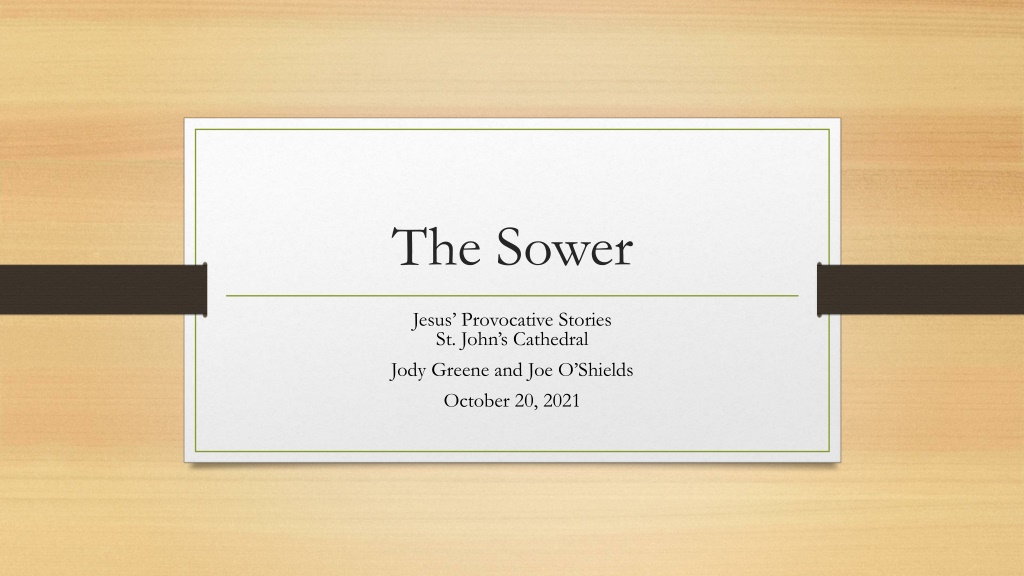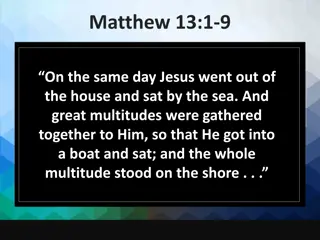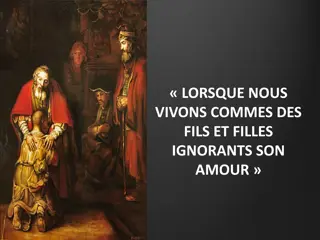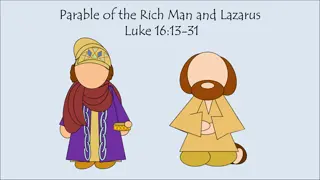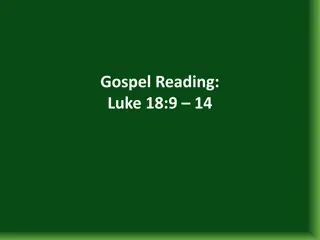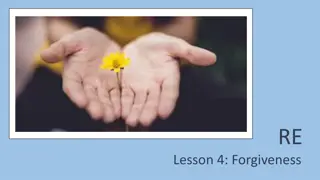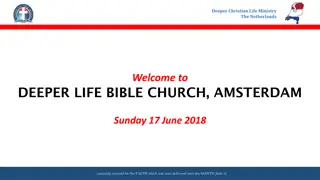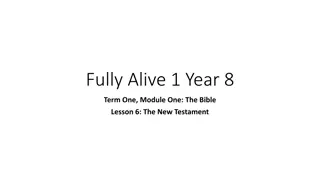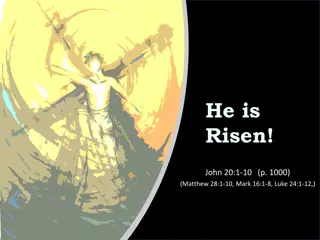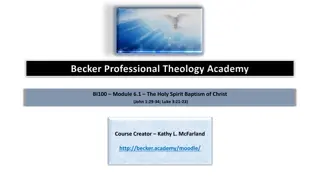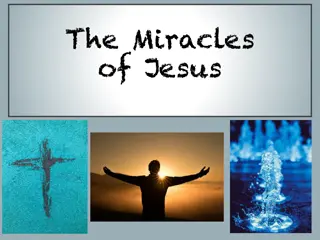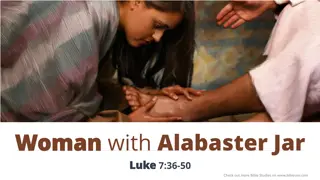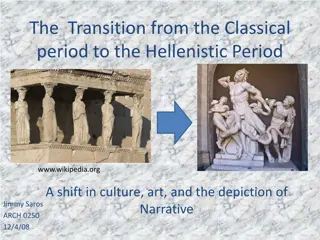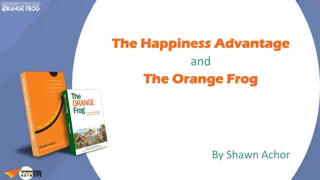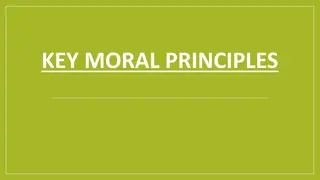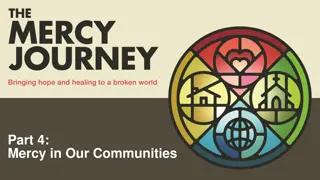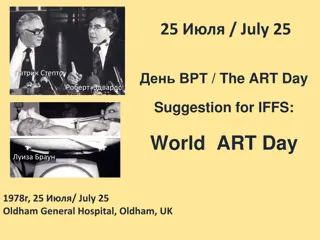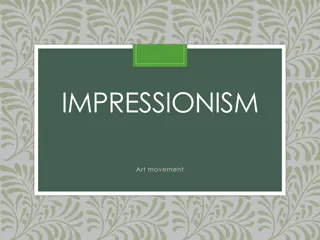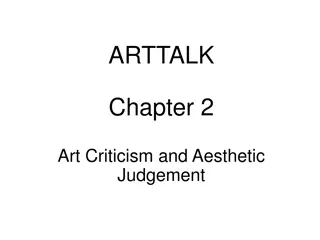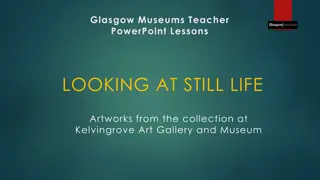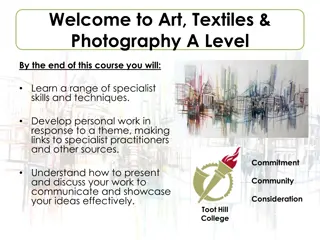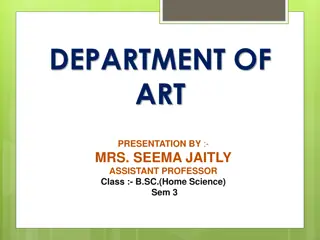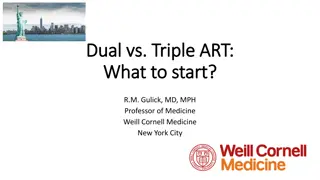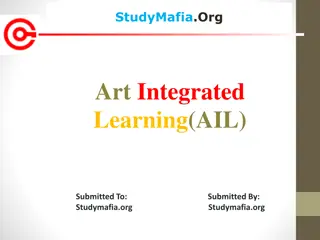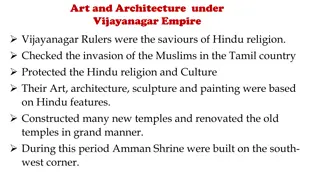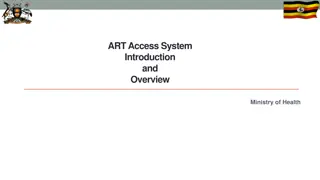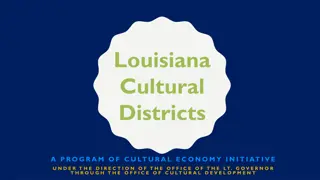The Parable of the Sower: Insights from Different Gospels and Art
Explore the profound story of the sower as told in various gospels - Mark, Luke, and Thomas - illustrating the significance of different interpretations. Delve into artistic depictions by Georg Pencz and Pieter Bruegel the Elder to enhance your understanding of this impactful parable.
- Parable of the Sower
- Gospel Interpretations
- Artistic Depictions
- Religious Stories
- Spiritual Teachings
Download Presentation

Please find below an Image/Link to download the presentation.
The content on the website is provided AS IS for your information and personal use only. It may not be sold, licensed, or shared on other websites without obtaining consent from the author. Download presentation by click this link. If you encounter any issues during the download, it is possible that the publisher has removed the file from their server.
E N D
Presentation Transcript
The Sower Jesus Provocative Stories St. John s Cathedral Jody Greene and Joe O Shields October 20, 2021
The Sower as told by Godly Play teacher Ms. Kelly at St. Andrews, Jacksonville https://www.bing.com/videos/search?q=godly+play+parable+of +the+sower&docid=608049107345565828&mid=C3F1D4F57E B74DC2FEE3C3F1D4F57EB74DC2FEE3&view=detail&FOR M=VIRE
The Text: Mark 4:3-9 3 Listen! A sower went out to sow. 4 And as he sowed, some seed fell on the path, and the birds came and ate it up. 5 Other seed fell on rocky ground, where it did not have much soil, and it sprang up quickly, since it had no depth of soil. 6 And when the sun rose, it was scorched; and since it had no root, it withered away. 7 Other seed fell among thorns, and the thorns grew up and choked it, and it yielded no grain. 8 Other seed fell into good soil and brought forth grain, growing up and increasing and yielding thirty and sixty and a hundredfold. 9 And he said, Let anyone with ears to hear listen!
The text: Luke 8:5-8 5 A sower went out to sow his seed; and as he sowed, some fell on the path and was trampled on, and the birds of the air ate it up. 6 Some fell on the rock; and as it grew up, it withered for lack of moisture. 7 Some fell among thorns, and the thorns grew with it and choked it. 8 Some fell into good soil, and when it grew, it produced a hundredfold. As he said this, he called out, Let anyone with ears to hear listen!
The Text: Thomas 9 (9) Jesus said, "Now the sower went out, took a handful (of seeds), and scattered them. Some fell on the road; the birds came and gathered them up. Others fell on the rock, did not take root in the soil, and did not produce ears. And others fell on thorns; they choked the seed(s) and worms ate them. And others fell on the good soil and it produced good fruit: it bore sixty per measure and a hundred and twenty per measure."
Georg Pencz, Life of Christ: Parable of the Sower (German, 16th C.) Fine Arts Museums of San Francisco
Pieter Bruegel the Elder, Parable of the Sower (Flemish, 1557). Timken Museum of Art, San Diego, CA.
Tissot (France, 1836-1902) presents the Sower as a 1st century Palestine farmer and not like the 19th century European peasant. This is indicated by the barefooted vigorous sturdy body and the dressing pattern. The use of the sash was a Jewish custom by law which separated the chosen ones from the pagans. In addition, the scarf was a typical Jewish head gear which held the Jewish name for God (J.H.V.H) at its four corners. In this painting, the sower moves with an engaging palpability as the elements of the Gospel surround him. His left hand holds on to a robe created pouch of seeds, while his right hand scatters the grain in a sweeping motion of the arm. A flock of birds break forth across the horizon. A group of weeds sway in the morn. The north easterly winds waft the air. The partially rocky terrain flows through the land. Yet the sower walks upright, undeterred. His outstretched arm is reminiscent of the Savior preaching the Word. The technique of sowing is evocative of the practice of farming in 1stcentury Palestine. Sowing often preceded ploughing and followed the broadcast method. The unfenced fields featured as long strips with a common path beaten hard by the feet of passersby. Occasional patches consisted of a thin skin of earth on top of an underlying shelf of limestone rock. Weeds like tares and thorns laid in ambush. It is this terrain that the painter tries to bring to life to enhance the viewer s understanding of the parable. Thus the painting by Tissot is a truce of the mystical and the ideal with passionate realism. Commentary from ON THE FIELD: The Sower by James Tissot (pottypadre.com)
Purpose of Parables: Mark 4:10-12 10 When he was alone, those who were around him along with the twelve asked him about the parables. 11 And he said to them, To you has been given the secret of the kingdom of God, but for those outside, everything comes in parables; 12 in order that they may indeed look, but not perceive, and may indeed listen, but not understand; so that they may not turn again and be forgiven.
Purpose of Parables: Matthew 13:10-17 10 Then the disciples came and asked him, Why do you speak to them in parables? 11 He answered, To you it has been given to know the secrets[b] of the kingdom of heaven, but to them it has not been given. 12 For to those who have, more will be given, and they will have an abundance; but from those who have nothing, even what they have will be taken away. 13 The reason I speak to them in parables is that seeing they do not perceive, and hearing they do not listen, nor do they understand. 14 With them indeed is fulfilled the prophecy of Isaiah that says: You will indeed listen, but never understand, and you will indeed look, but never perceive. 15 For this people s heart has grown dull, and their ears are hard of hearing, and they have shut their eyes; so that they might not look with their eyes, and listen with their ears, and understand with their heart and turn and I would heal them. 16 But blessed are your eyes, for they see, and your ears, for they hear. 17 Truly I tell you, many prophets and righteous people longed to see what you see, but did not see it, and to hear what you hear, but did not hear it.
Purpose of Parables: Luke 8:9-10 9 Then his disciples asked him what this parable meant. 10 He said, To you it has been given to know the secrets of the kingdom of God; but to others I speak in parables, so that looking they may not perceive, and listening they may not understand.
The Explanation: Mark 4:13-20 13And he said to them, Do you not understand this parable? Then how will you understand all the parables?14The sower sows the word.15These are the ones on the path where the word is sown: when they hear, Satan immediately comes and takes away the word that is sown in them.16And these are the ones sown on rocky ground: when they hear the word, they immediately receive it with joy.17But they have no root, and endure only for a while; then, when trouble or persecution arises on account of the word, immediately they fall away.18And others are those sown among the thorns: these are the ones who hear the word,19but the cares of the world, and the lure of wealth, and the desire for other things come in and choke the word, and it yields nothing.20And these are the ones sown on the good soil: they hear the word and accept it and bear fruit, thirty and sixty and a hundredfold.
The Explanation: Luke 8:11-15 11 Now the parable is this: The seed is the word of God.12 The ones on the path are those who have heard; then the devil comes and takes away the word from their hearts, so that they may not believe and be saved. 13 The ones on the rock are those who, when they hear the word, receive it with joy. But these have no root; they believe only for a while and in a time of testing fall away. 14 As for what fell among the thorns, these are the ones who hear; but as they go on their way, they are choked by the cares and riches and pleasures of life, and their fruit does not mature. 15 But as for that in the good soil, these are the ones who, when they hear the word, hold it fast in an honest and good heart, and bear fruit with patient endurance.
Augustine (354-430) wrote that biblical interpretation should be based upon the two greatest commandments: love of God and love of neighbor: Whoever, then, thinks that he understands the Holy Scriptures, or any part of them, but puts such an interpretation upon them as does not tend to build up this twofold love of God and our neighbor, does not yet understand them as he ought (On Christian Doctrine 1.40). Does Augustine s position help in your understanding of this parable?
What should this parable be named? The Sower The Careless Sower The Sower and the Seeds The Helpless, Hapless Seeds The Good Soil The Allegory of the Soils The Secret Savior The Purposely Confusing Parable The Miraculous Harvest Something else?
A Few Options for Interpretations from Klyne Snodgrass, Stories With Intent (Eerdmans, 2008) What do you focus on the sower, the seeds, the soils, the harvest, or something else? Perhaps the parable points to the miracle that, despite hopelessness and failure, God s eschatological overflowing brings the triumphant end God has promised (Jeremias and Crossan) Perhaps the parable is to give encouragement to disciples despite failures
A Few Options for Interpretations from Klyne Snodgrass, Stories With Intent (Eerdmans, 2008) Perhaps the parable explains why Israel rejected the Messiah Perhaps the parable reflects the experience of Jesus in his own proclamation Perhaps the parable emphasizes the effectiveness of the proclaimed word and the certainty of a good result, despite the lack of success with some Perhaps the seed represents the remnant of Israel; the exile is over since God is sowing the true Israel in her own land. Implicit in this is Jesus role in proclaiming the good news of the kingdom of God (N.T. Wright and others)
A Few Options for Interpretations from Klyne Snodgrass, Stories With Intent (Eerdmans, 2008) Perhaps the parable and interpretation are a midrash on Isaiah 6:9-10: Isaiah 6:9-10 Perhaps the parable focuses on the responsibility of hearing, understanding and responding to Jesus message. 9And he said, Go and say to this people: Keep listening, but do not comprehend; keep looking, but do not understand. 10Make the mind of this people dull, and stop their ears, and shut their eyes, so that they may not look with their eyes, and listen with their ears, and comprehend with their minds, and turn and be healed.
If a parable is an extended analogy used to convince and persuade, intended to prompt thinking and stimulate a response in relation to God, how response or transformation occurs in you on hearing this parable? If Jesus came to 21st C Jacksonville, what might he say or do to make the point or points he makes in the parable of the Sower?
